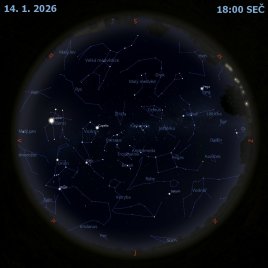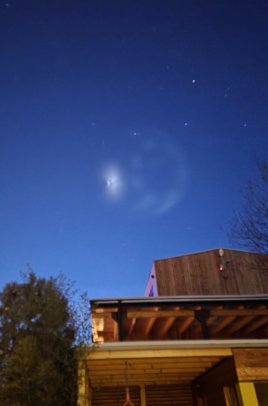NGST 10b: Objev planety odsouzené k zániku

Illustration Credit: ESA, C. Carreau; Text: Alex R. Howe (NASA/USRA, Science Meets Fiction Blog)
Tento horký jupiter je odsouzený k zániku. Horké jupitery jsou obří planety podobné Jupiteru, které obíhají mnohem blíže ke svým mateřským hvězdám, než Merkur obíhá naše Slunce. Ovšem některé horké jupitery jsou extrémnější, než jiné. Všeobecně ilustrovaná, dosud nejbližší a nejrychleji obíhající obří planeta NGTS-10b obíhá svou mateřskou hvězdu jen jednou za 18 hodin. NGTS-10b je o něco větší než Jupiter, ale obíhá méně než dva průměry své mateřské hvězdy od jejího povrchu. Když planeta obíhá tak blízko, tak se dá očekávat pohyb po spirále poháněný slapovými silami, až ji nakonec roztrhá gravitace hvězdy. NGTS-10b objevili badatelé University ve Warwicku a pojmenovali ji po přehlídce tranzitů ESO Next Generation Transit Survey, která detekovala nebohou planetu, když přecházela před svojí hvězdou a odclonila trochu světla. I když nakonec k bouřlivému zániku NGTS-10b dojde, tak dosud nevíme kdy.
Seznam odkazů v popisu
- Wikipedia: Hot_Jupiter
- NASA: Jupiter
- NASA: Mercury
- NASA: Sun
- Youtube.com: ScienceCasts: The Strange Attraction of Hot Jupiters
- NASA: NASA's Spitzer Finds Water Vapor on Hot, Alien Planet (Artist's Concept)
- Warwick.ac.uk: 18-hour year planet on edge of destruction
- APOD: 2019-02-05 Perijovum 16: Průlet kolem Jupiteru
- APOD: 2019-07-10 4000 exoplanet
- Wikipedia: Tidal_acceleration
- Wikipedia: Tidal_force
- arXiv.org: NGTS-10b: The shortest period hot Jupiter yet discovered
- Warwick.ac.uk: Science / Physics / Astronomy and Astrophysics Group
- ESO.org: European Southern Observatory
- NgTransits.org: Next-Generation Transit Survey
- Wikipedia: Next-Generation_Transit_Survey
- APOD: 2004-06-23 Malebný přechod Venuše
- Youtube.com: Breakup of Exoplanet NGTS-10 b
NASA Official: Phillip Newman Specific rights apply. NASA Web Privacy Policy and Important Notices
A service of: ASD at NASA / GSFC & Michigan Tech. U.
Odkaz na originální APOD


